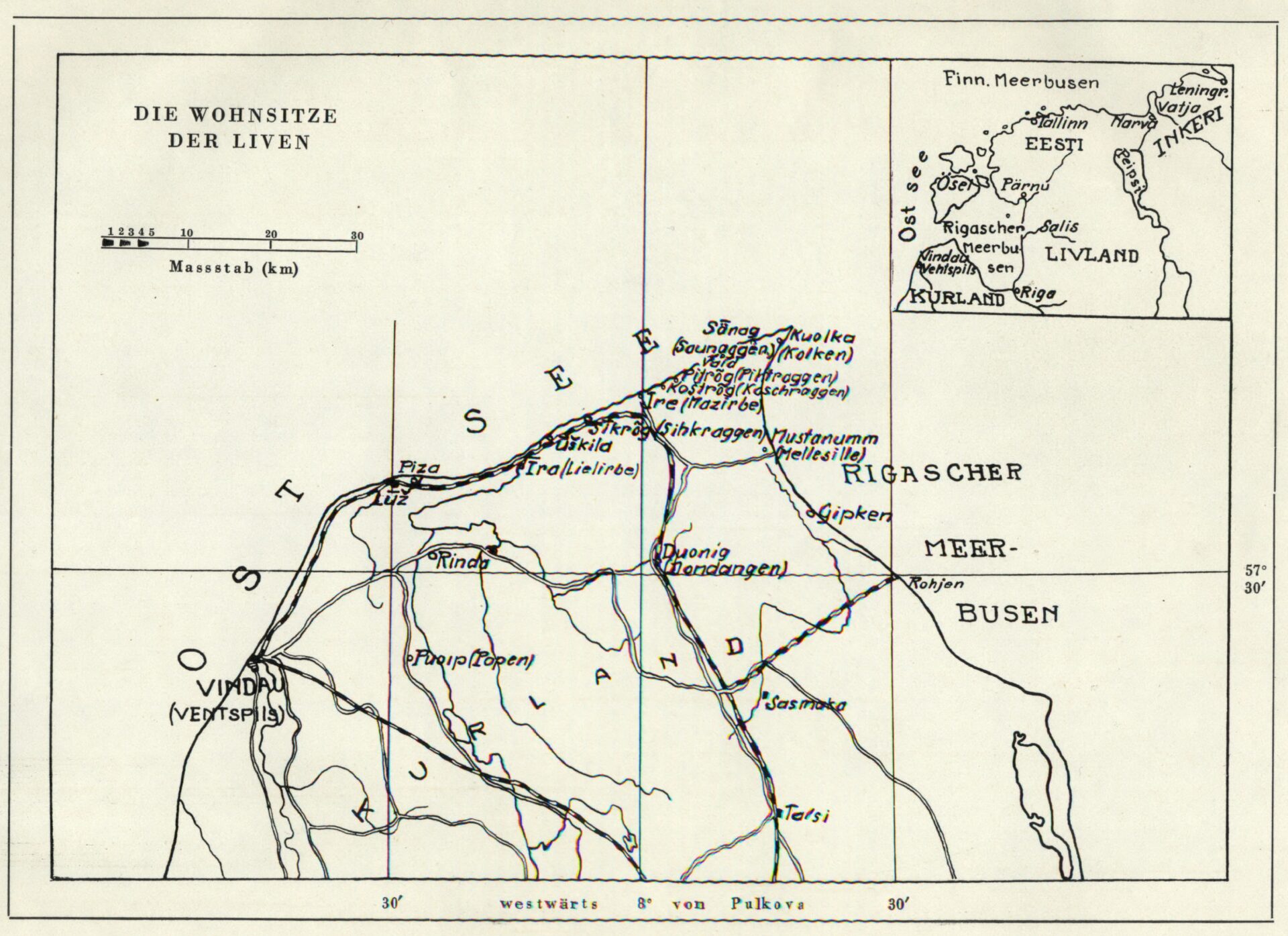
Livonian
Tūoņ / Tone
Two tones are distinguished in Livonian words: plain tone and broken tone. In stressed syllables, plain tone is pronounced with a slight rise, while broken tone is rising-falling or falling. For broken tone, the peak of the fundamental frequency is accompanied by laryngealization, i.e., tensing of the laryngeal muscles and irregular oscillation of the vocal cords, and occasionally also a glottal stop. In words with broken tone, the voice sounds more tense. In the image below, the solid line shows the contour for plain tone and the dashed line shows the contour for broken tone.

Listen to Hilda Grīva’s pronunciation of broken and plain tone. In Livonian, broken tone is marked with an apostrophe.
The sentences “Kītõ jo’ud vēl. Kītõ joud vēl.” ‘Say flour some more. Say power some more.’ (jo’ud with broken tone, joud with plain tone):
The word mǭ ‘earth’ with plain tone:
The word rǭ’ ‘money’ with broken tone:


